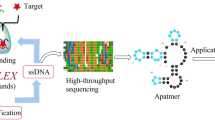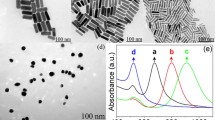Abstract
The enzyme-linked immunosorbent assay (ELISA) offers several advantages, including simple operation, high throughput, and low cost, making it an ideal immunoassay method for efficient screening of disease-related biomarkers in clinical samples. However, the traditional colorimetric ELISA has relatively low sensitivity, which promotes the continuous emergence of various novel signal amplification technologies. In this work, we fused the AFP-specific nanobody (A1) with the streptavidin-binding peptide (SBP) to develop a fusion protein (A1-SBP) as biorecognition element in a colorimetric ELISA for detecting AFP. Besides, to further improve the sensitivity of the traditional colorimetric ELISA, the streptavidin-conjugated polymerized horseradish peroxidase (SA-PolyHRP) were selected as a detection probe for signal amplification. The proposed signal enhancement strategy demonstrated a limit of detection (LOD) of 0.597 ng/mL for the SA-polyHRP-based ELISA, which is 7.67-fold lower than that of the traditional SA-HRP-based ELISA without additional steps. Furthermore, the proposed SA-polyHRP-based ELISA showed a good correlation with the detection of clinical samples using the Roche E601 chemiluminescence immunoassay analyzer. Therefore, the proposed signal enhancement strategy is an attractive approach for improving the sensitivity of immunoassay without requiring additional steps.
Graphical Abstract






Similar content being viewed by others
Data availability
The authors confirm that the data supporting the findings of this study are available within the article and its supplementary materials.
References
H. Sung, J. Ferlay, R.L. Siegel, M. Laversanne, I. Soerjomataram, A. Jemal, F. Bray, CA Cancer J. Clin. 71, 209–249 (2021)
B. Moghimi-Dehkordi, A. Safaee, World journal of gastrointestinal oncology 4, 71 (2012)
B. Njei, Y. Rotman, I. Ditah, J.K. Lim, Hepatology 61, 191–199 (2015)
Y. Zhang, M. Li, X. Gao, Y. Chen, T. Liu, J. Hematol. Oncol. 12, 1–13 (2019)
G. De Rubis, S.R. Krishnan, M. Bebawy, Trends Pharmacol. Sci. 40, 172–186 (2019)
S.H. Jafari, Z. Saadatpour, A. Salmaninejad, F. Momeni, M. Mokhtari, J.S. Nahand, M. Rahmati, H. Mirzaei, M. Kianmehr, J. Cell. Physiol. 233, 5200–5213 (2018)
L. Wu, X. Qu, Chem. Soc. Rev. 44, 2963–2997 (2015)
V.S.A. Jayanthi, A.B. Das, U. Saxena, Biosens. Bioelectron. 91, 15–23 (2017)
C. Sauzay, A. Petit, A.-M. Bourgeois, J.-C. Barbare, B. Chauffert, A. Galmiche, A. Houessinon, Clin. Chim. Acta 463, 39–44 (2016)
Z. Naz, S. Usman, K. Saleem, S. Ahmed, H. Bashir, M. Bilal, A. Sumrin, Biomed. Res. 29, 2478–2483 (2018)
A.T. Kal-Koshvandi, TrAC, Trends Anal. Chem. 128, 115920 (2020)
K. Tzartzeva, A.G. Singal, Expert Rev. Gastroenterol. Hepatol. 12, 947–949 (2018)
K. Shah, P. Maghsoudlou, Br. J. Hosp. Med. 77, C98–C101 (2016)
L. Wu, G. Li, X. Xu, L. Zhu, R. Huang, X. Chen, TrAC, Trends Anal. Chem. 113, 140–156 (2019)
R. Ahirwar, A. Bhattacharya, S. Kumar, Expert Rev. Mol. Diagn. 22, 761–774 (2022)
L. Wang, Y. Zhang, X. Gao, Z. Duan, S. Wang, J. Agric. Food Chem. 58, 3265–3270 (2010)
M. Mishra, S. Tiwari, A. Gunaseelan, D. Li, B.D. Hammock, A.V. Gomes, Electrophoresis 40, 1731–1739 (2019)
D. Li, Y. Cui, C. Morisseau, S.J. Gee, C.S. Bever, X. Liu, J. Wu, B.D. Hammock, Y. Ying, Anal. Chem. 89, 6248–6256 (2017)
N. Singh, D. Li, C.B. McReynolds, C. Morisseau, B.D. Hammock, Anal. Methods 14, 1810–1819 (2022)
Q. Chen, D. Sun, H. Pei, B. Su, K. Bao, H. Cao, C. Zhang, B.D. Hammock, X. Liu, RSC Adv. 10, 23767–23774 (2020)
D.A. Armbruster, T. Pry, Clin. Biochem. Rev. 29, S49–S52 (2008)
A. Shrivastava, V.B. Gupta, Chron. Young Sci 2, 21–25 (2011)
Acknowledgements
This research was funded by the Natural Science Foundation of Hainan Province (No. 322MS016) and the National Natural Science Foundation of China (No. 31901800, No. 32260623 and No.31801156), the Specific Research Fund of the Innovation Platform for the Academinicians of Hainan Province (No. YSPTZX202152) and Key Laboratory of Tropical Fruits and Vegetables Quality and Safety for State Market Regulation (No. ZX-2023001).
Author information
Authors and Affiliations
Corresponding author
Ethics declarations
Conflicts of interest
The authors declare that they have no conflicts that could have appeared to influence the work reported in this paper.
Supplementary Information
Below is the link to the electronic supplementary material.
Rights and permissions
Springer Nature or its licensor (e.g. a society or other partner) holds exclusive rights to this article under a publishing agreement with the author(s) or other rightsholder(s); author self-archiving of the accepted manuscript version of this article is solely governed by the terms of such publishing agreement and applicable law.
About this article
Cite this article
Sun, D., Liu, X., Bao, K. et al. Nanobody based immunoassay for alpha fetal protein detection using streptavidin-conjugated polymerized horseradish peroxidase for signal amplification. ANAL. SCI. 39, 2059–2065 (2023). https://doi.org/10.1007/s44211-023-00423-4
Received:
Accepted:
Published:
Issue Date:
DOI: https://doi.org/10.1007/s44211-023-00423-4




